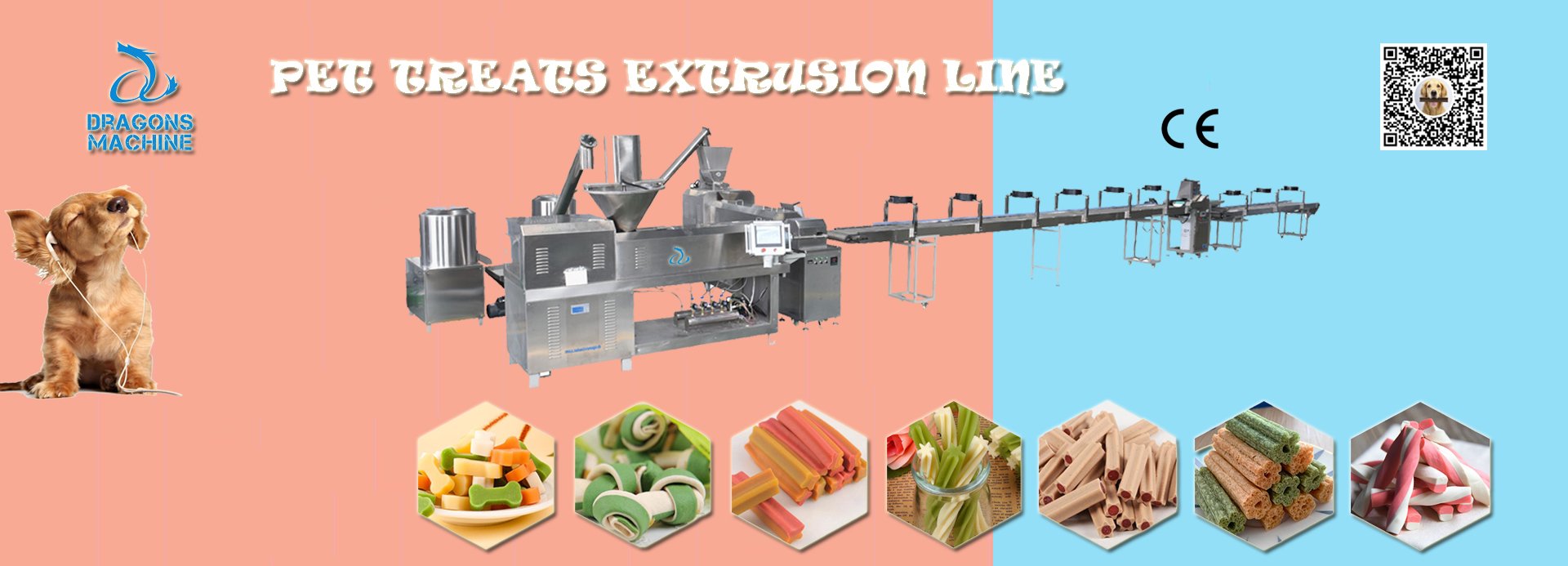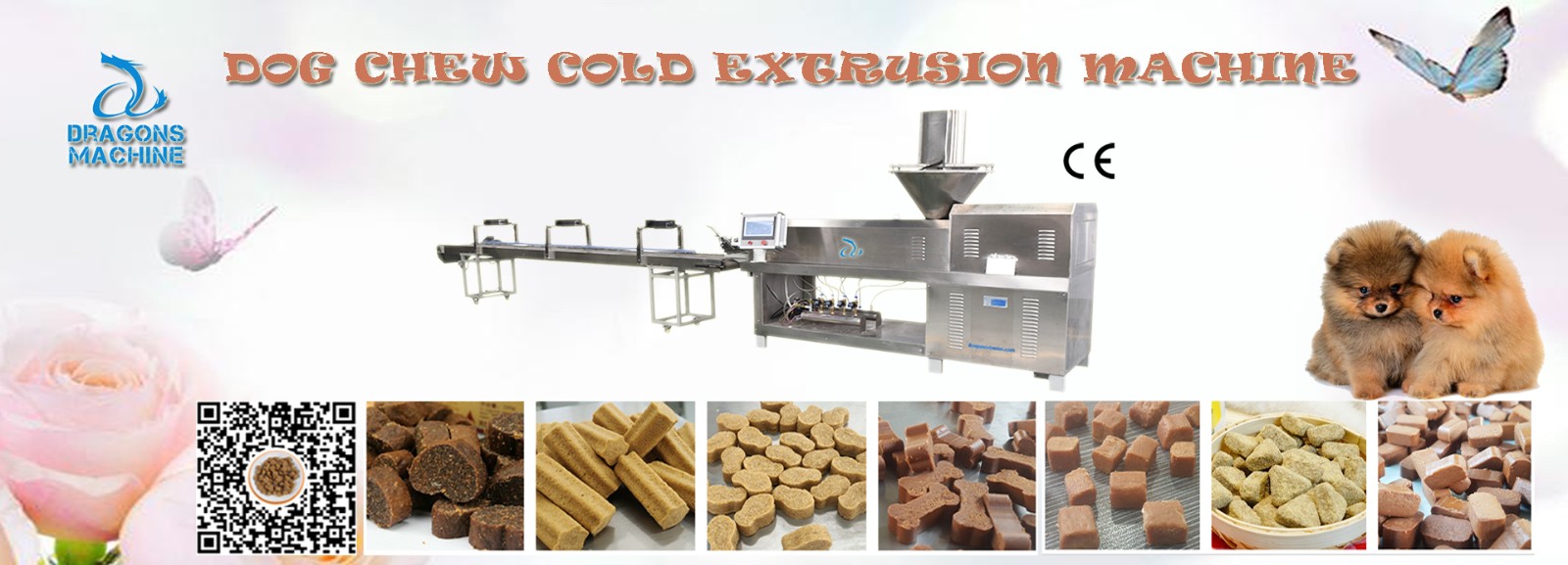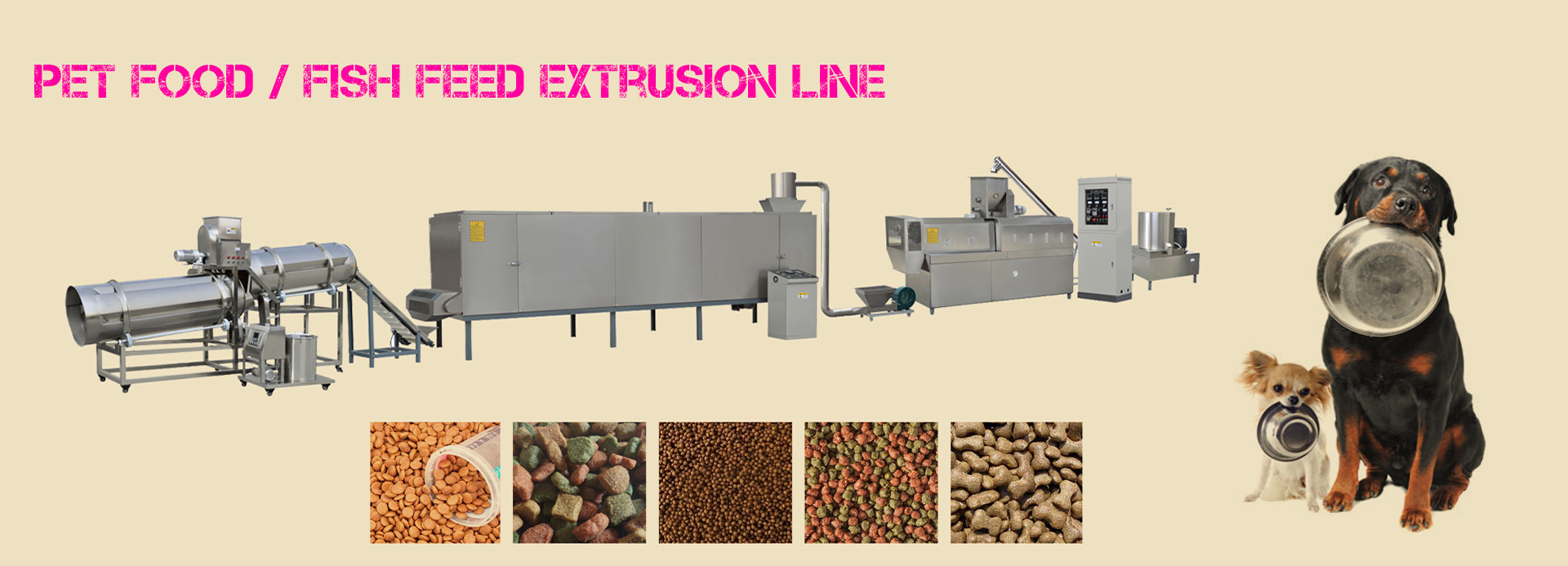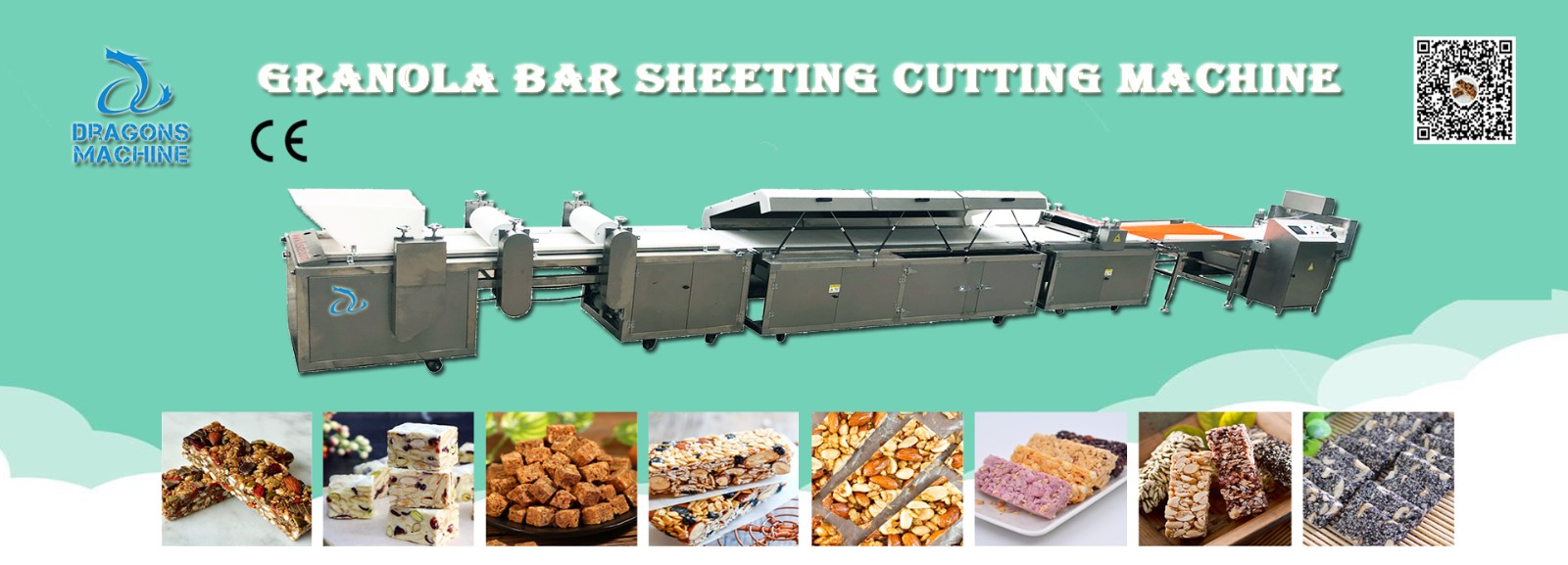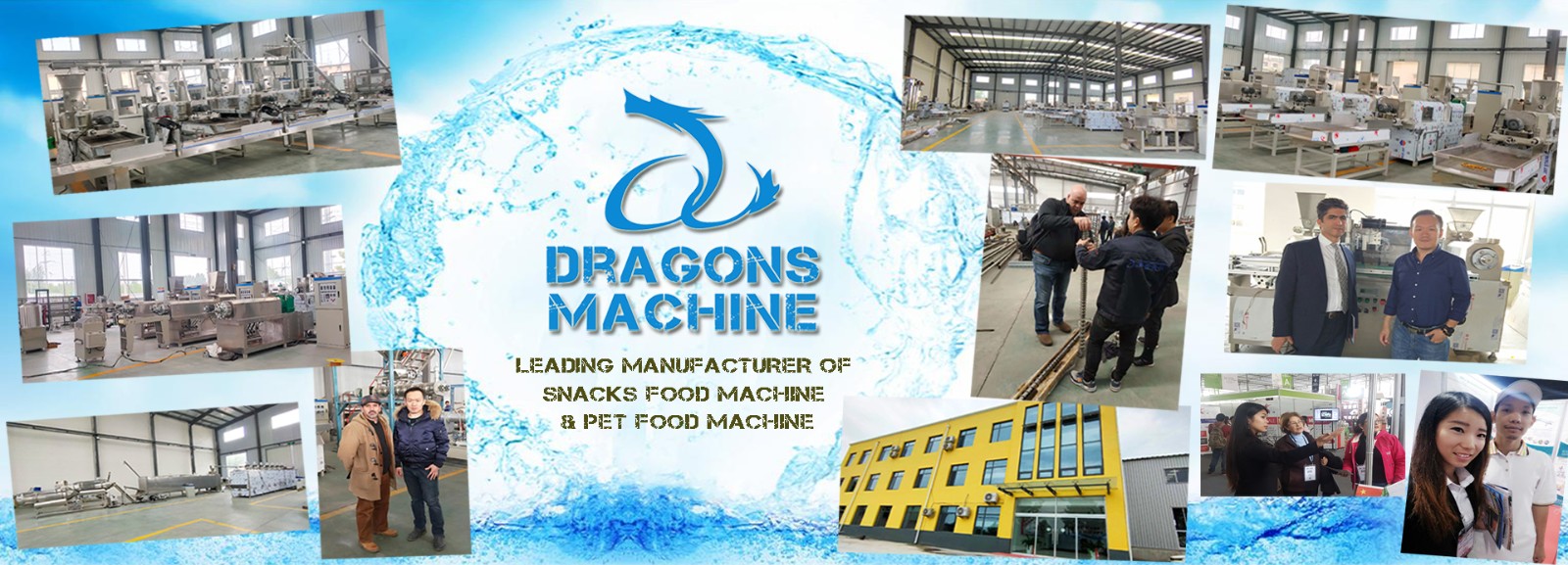Extruded dry pet food and treat processing is a highly specialized method utilized in the production of various pet foods, including kibble, treats, and pellets for animals like dogs, cats, birds, and more. The extrusion process involves combining ingredients, such as grains, proteins, vitamins, and minerals, and subjecting them to high pressure, temperature, and shear forces to create a final product with specific nutritional qualities and shapes. This method has become a cornerstone in the pet food industry due to its efficiency, versatility, and ability to produce nutritionally balanced and shelf-stable pet foods.
The extrusion process begins with the formulation of the recipe. Ingredients are selected based on their nutritional value, functionality, and desired characteristics in the final product. These can include meat meals, grains (such as corn, wheat, or rice), fats, vitamins, minerals, and additives for flavor, color, or texture. The proportions are carefully calculated to meet specific nutritional requirements for different animals and life stages.
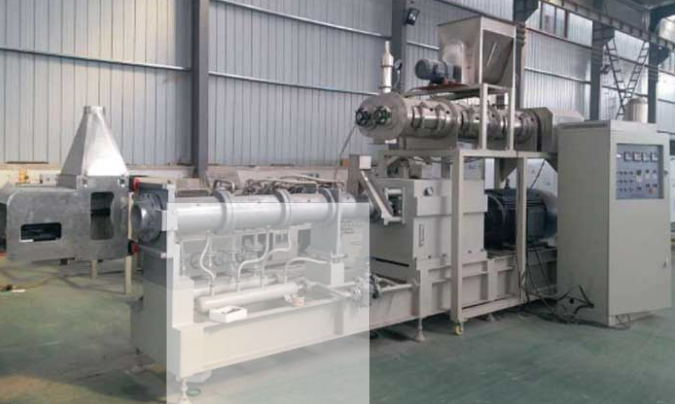
Dry Pet Food Extrusion Line
Once the ingredients are selected, they are mixed and ground to create a homogeneous blend. This mixture is then fed into an extruder, which is a machine specifically designed for this process. The extruder consists of a barrel, where the ingredients are conveyed using a screw mechanism, and it is equipped with heating elements and a die at the end to shape the final product.
Inside the extruder, the blend undergoes a combination of high temperature (generally between 100°C to 160°C) and high pressure due to the screw's compression. The raw materials are subjected to intense heat and pressure for a short period before they are expelled through the die. This rapid change in pressure and temperature causes the mixture to expand and puff as it exits the die, giving the final product its characteristic shape.
The extruded product is then quickly cooled and dried to reduce moisture content, ensuring a longer shelf life and preventing microbial growth. The cooling process may involve passing the product through a conveyor belt or a cooling tunnel. After cooling, the pet food or treats may be coated with fats, flavors, or additional nutrients to enhance palatability and nutritional value.
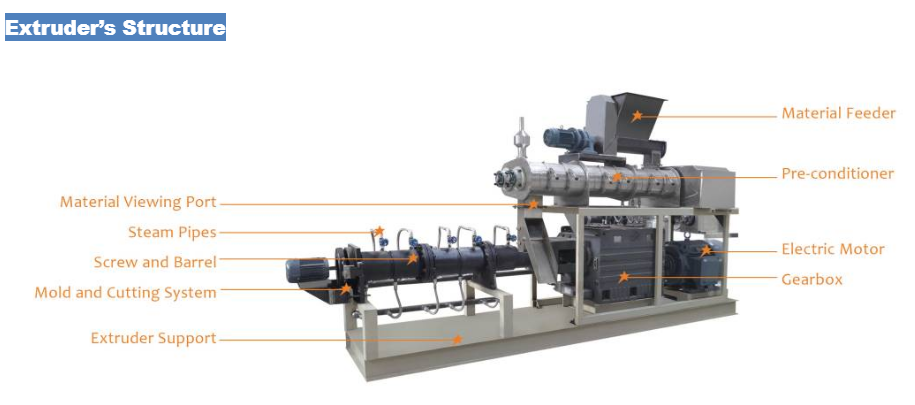
One of the key advantages of the extrusion process is the ability to create a wide variety of shapes, sizes, and textures. Manufacturers can produce kibble in different shapes, from small round pellets to bone-shaped pieces, catering to the preferences of pets and their owners. The extrusion process also allows for the inclusion of different ingredients in distinct layers, enabling the production of multi-textured or multi-colored products.
Moreover, extrusion facilitates the creation of products with consistent nutritional content and uniform quality, meeting the necessary standards and regulations for pet food safety and nutrition. This method also aids in the destruction of anti-nutritional factors and pathogens, enhancing the digestibility and safety of the final product.
In conclusion, extruded dry pet food and treat processing is a sophisticated and efficient technique that plays a pivotal role in the production of high-quality, nutritionally balanced pet foods. Its versatility, ability to create diverse products, and ensure nutritional consistency have made it a cornerstone in the pet food industry.
Benefits of Extruded Dry Pet Food & Treats
1. Nutritional Preservation: The extrusion process effectively retains the nutritional content of the ingredients, ensuring that pets receive essential nutrients in their diet.
2. Improved Digestibility: Extruded dry pet food undergoes a significant transformation in structure, enhancing its digestibility for pets, allowing for better absorption of nutrients.
3. Texture and Palatability: This method offers flexibility in shaping the food, allowing for different textures that appeal to various pets' preferences, ultimately enhancing palatability.
4. Longer Shelf Life: The extrusion process facilitates the elimination of moisture, resulting in a product with an extended shelf life compared to other food processing methods.
Quality Assurance in Production
Manufacturers adhere to stringent quality control measures during extruded dry pet food processing. They conduct regular testing and analysis to ensure that the products meet nutritional standards, are free from contaminants, and maintain consistent quality across batches.
Meeting Dietary Needs of Pets
Extruded dry pet food and treats are formulated to address specific dietary requirements of pets at different life stages. Whether it's food tailored for puppies, adult dogs, kittens, or senior pets, manufacturers design these products to cater to unique nutritional needs.
Environmental Impact
Compared to other pet food production methods, extrusion boasts environmental benefits. The efficient use of resources, reduced waste, and longer shelf life contribute to a more sustainable manufacturing process.
Conclusion
Extruded dry pet food and treat processing represent an innovative and efficient method for producing high-quality pet food. The extrusion process ensures optimal nutritional content, improved digestibility, and enhanced palatability, meeting the diverse dietary needs of pets across different life stages.
















